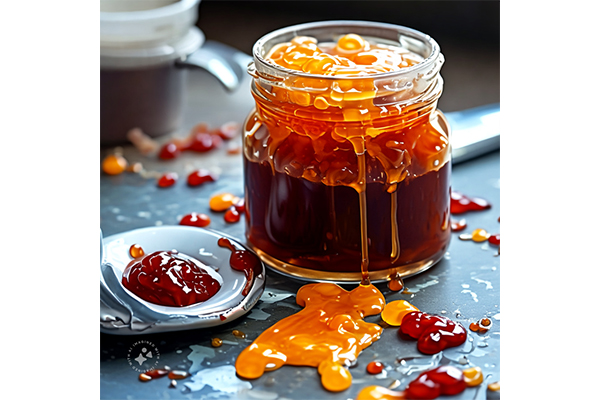I was recently reading a book about ink and how it is formulated. As often happens when I am reading dull, informational text, my mind drifted and I found myself researching something far more compelling. In this case, I stumbled upon, of all things, a French guidebook for medieval housewives.
Now here me out – this will make sense as you read on.
The book was called “Le Ménagier” and it was written to instruct women on proper behavior in marriage and in running a household. My first impression from this obscure publication was that 14th century Parisian women spent a lot of time engaged in warfare with fleas. The writer gave no less than 6 recipes for getting rid of them and noted that keeping the bed free of them was an essential rule for keeping a husband happy.
Dwayne to himself: Hmmm…I suppose a flea-free bed would elevate my mood…
Le Ménagier also includes gardening tips, cooking advice, and – wait for it – instructions on how to make ink for writing.
Dwayne out loud: You see! I told you this would make sense!

Of course, for me to accurately interpret and assess this archaic ink recipe, I assumed I was going to need an expert in the romantic languages, someone with a keen understanding of chivalric French culture.
Dwayne to himself: Or I could just use a search engine like everyone else does.
According to Le Ménagier, here are the ingredients for a quality writing ink:
- 2 ounces of galls
Dwayne to himself: What the flip is a gall?
Search engine: Galls are natural growths that form on oak trees in response to certain types of insects laying eggs or depositing their larvae into the tree’s tissue.
Dwayne to himself: That sounds disgusting. Now where was I? Oh yes…
- 2 ounces of galls
- 2 ounces of gum Arabic
- 3 ounces of copperas
The medieval recipe also includes these helpful instructions:
- Break the galls apart into little pieces and soak them for 3 days, then boil them in rainwater or water from a still pond.
- Add the copperas and gum and stir until cool.
- Store in a cold, damp place.
What strikes me about this formula for ink, published in 1393, is that it wasn’t anything new. It was basically a recipe that had been in existence already for over 1000 years. And so, here we are, around the time Johannes Gutenberg is born, people are sharing an ink recipe that was once used to create the dead sea scrolls.
Dwayne to himself: I am no chef – but this must be one very good recipe!
Upon researching the ingredients more closely, I learned that the galls and the iron sulfate are used to give the ink its color, while the gum Arabic is valued for its ability to improve quality, performance, and longevity.
Dwayne to himself: Well, that’s interesting. I wonder what else gum Arabic can do.
Search engine: Gum arabic is extremely useful beyond formulating ink. To this day, it can be used as an emulsifier, ensuring that soft drinks and salad dressing do not revert to their various components. It can also be utilized as a thickening agent, giving ice cream a pleasant consistency. It’s also the “glue” on cigarette paper, it sticks the colored coating to M&Ms, and it can be found in cosmetics, meat substitutes, insecticides, medicine, and cake frosting.
This was all very interesting to me and I found myself wanting to learn more about gum Arabic. Specifically, what makes it so versatile and effective.
Search engine: You don’t have much of a life, do you?
Having recently been offended by my computer’s search engine, I went to our university library and checked out a book called “Gum Arabic, the Golden Tears of the Acacia Tree,” written by Dorrit Van Dalen.
It was in Van Dalen’s scholarly work that I learned…
Dwayne to himself: I really like the use of that word, scholarly. It makes me sound smart.
It was in Van Dalen’s scholarly work that I learned gum Arabic is a natural gum harvested from two specific types of acacia trees. These trees are primarily found in the semi-arid climate zone that stretches across Africa, just south of the Sahara Desert. The gum is extracted from the tree’s bark and branches, forming a hardened sap. It is then collected and processed for these various industrial and culinary uses.
But it is not where it comes from that makes Gum Arabic such an effective natural resource.
You see, even if you happened to have just the right type of acacia tree and you extracted the sap from it, what you would have would be useless.
Search engine: Useless sap? That kind of reminds me of y…
THUNK! Dwayne slams his laptop shut.
Where was I?
Oh yes – what gives gum Arabic so much power? Where does that power come from and how is it optimized?
According to Van Dalen, for these trees to produce the good stuff – the stuff that really works – the trees have to have a pretty terrible life. The trees that work best for producing powerful, effective gum Arabic are trees that have experienced drought, harsh desert wind, disease, gashes to their outer cortex, and damage from gnawing insects. Only after the trees have been attacked, weathered, worn, and beaten – only then – can they do their best work.
Isn’t that an incredible lesson?
Sometimes, experiencing adversity can be a good thing.
Maybe – if I am feeling tired, beat up, and worn down, perhaps I might finally be ready to do my best work.
It certainly is something to ponder.

Dwayne Magee, CGCM and former IPMA President, is celebrating his 18th year at Messiah University in Mechanicsburg, PA as Director of Messiah Press and Postal Services. His team of 11 print and mail professionals support the communication needs of Messiah University by producing materials that inform, engage, and connect the broader Messiah community in support of the University’s mission. Prior to his work at Messiah, Dwayne served as assistant manager and ISO coordinator for 17 years at AlphaGraphics in Camp Hill, Pennsylvania.
Outside of work, Dwayne serves on the foundation board for CPARC, an organization supporting the needs of individuals with intellectual and developmental disabilities. He is also an English major at Messiah and enjoys exploring spiritual, environmental, and social concerns through creative writing and the arts. He is the father of two children, Garrison and Grayson, and he currently resides in Mechanicsburg, Pennsylvania with his wife Sue and their two dogs, Molly and Solomon.
